

| A Level Power Switching Capacitor Phase Diac MOSFET Phase >Relay< Thyristor Thyristor AC Transistor Triac |
Power Switching Relay |
|

A small current in the relay electromagnet coil turns on a much larger current (or perhaps a very high voltage). When a current passes through the coil, the soft iron core becomes strongly magnetised. This attracts the soft iron rocker which tilts on its hinge. The rocker presses the left hand springy contact. This makes the relay contacts touch and the circuit turns on. Large versions of this arrangement are used to control the national power distribution grid. A smaller version turns on the starter motor in a car engine. Before the telephone system went digital, the phone network relied on electromechanical switches only a little more complex than this.
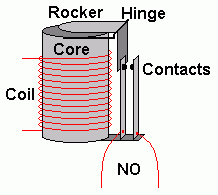
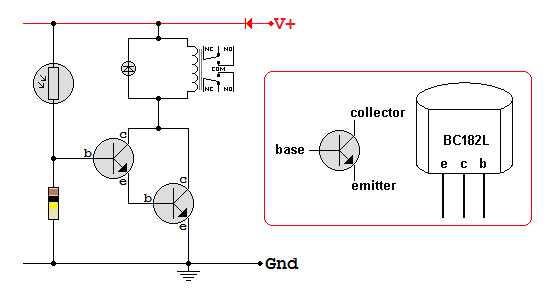
The circuit above will turn the relay coil on when the light level increases. This can be used to turn on or off room or street lights.
The diode is needed because sudden changes of current in the relay coil would create a voltage pulse big enough to destroy the driver transistor/s. The diode provides a circuit where the coil current can die away slowly without creating a high voltage pulse. The high voltage pulse is caused by "Back EMF".
This is not a good solution in practice because there will be a critical light level at which the relay current causes the relay to operate in an unpredictable way. Not quite on or not quite off. The worst case would cause the lights to turn on and off rapidly. When the lights came on, the light level would increase causing them to turn off again but then the light level would be too low so they would turn back on etc etc.
A better solution would include a Schmitt trigger. This circuit has a property called hysteresis which solves the problem.
In each of the circuits below, what happens when you briefly press the push button switch? Try this with a real-life relay.
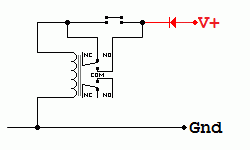 |
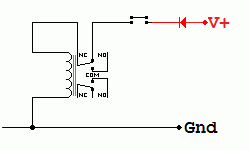 |
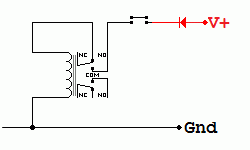 |
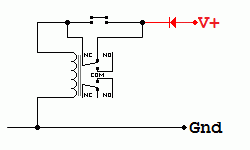 |
Contact, Copyright, Cookies and Legalities: C Neil Bauers - reviseOmatic V4 - © 2016/17
Hosted at linode.com - London
Please report website problems to Neil